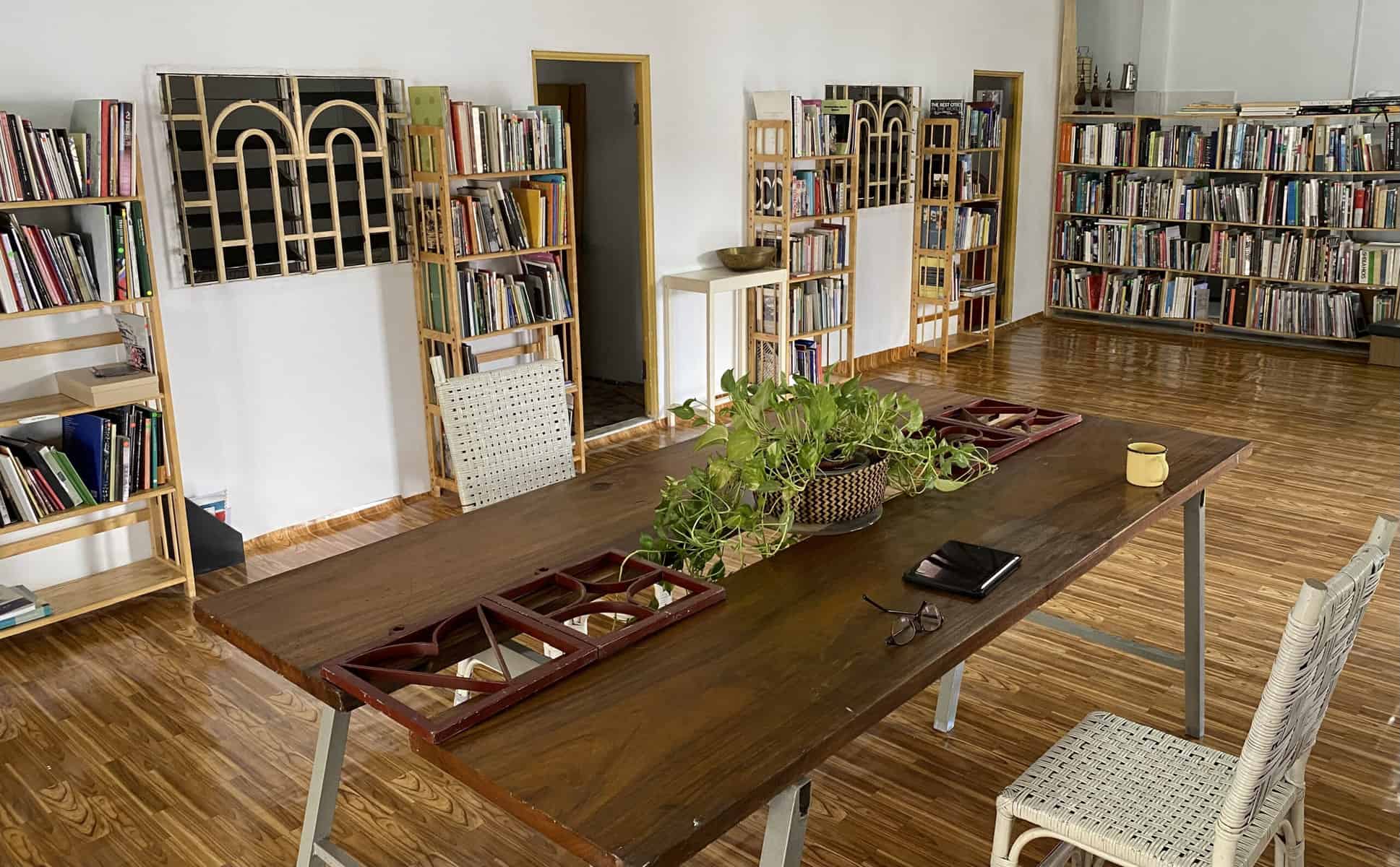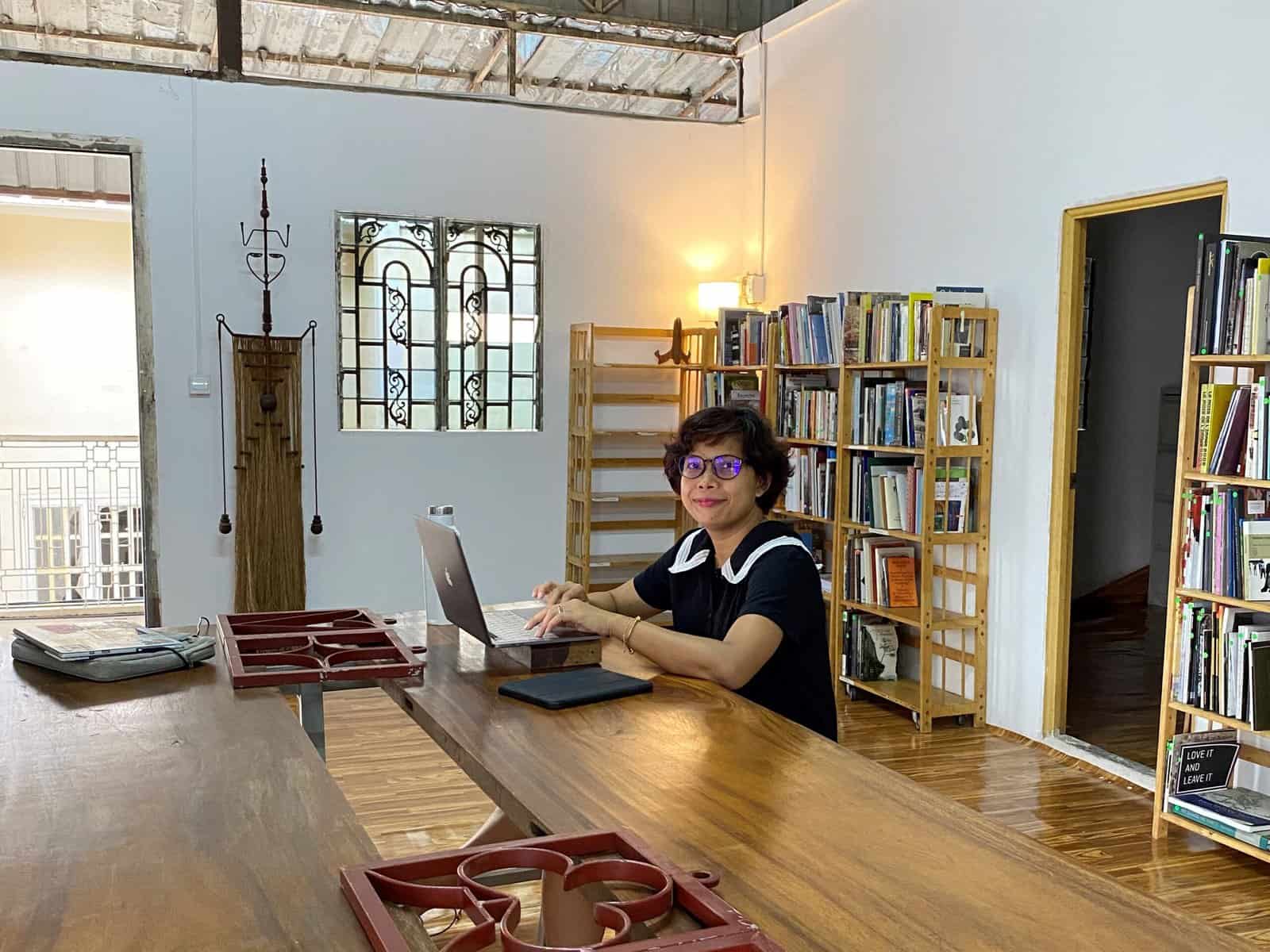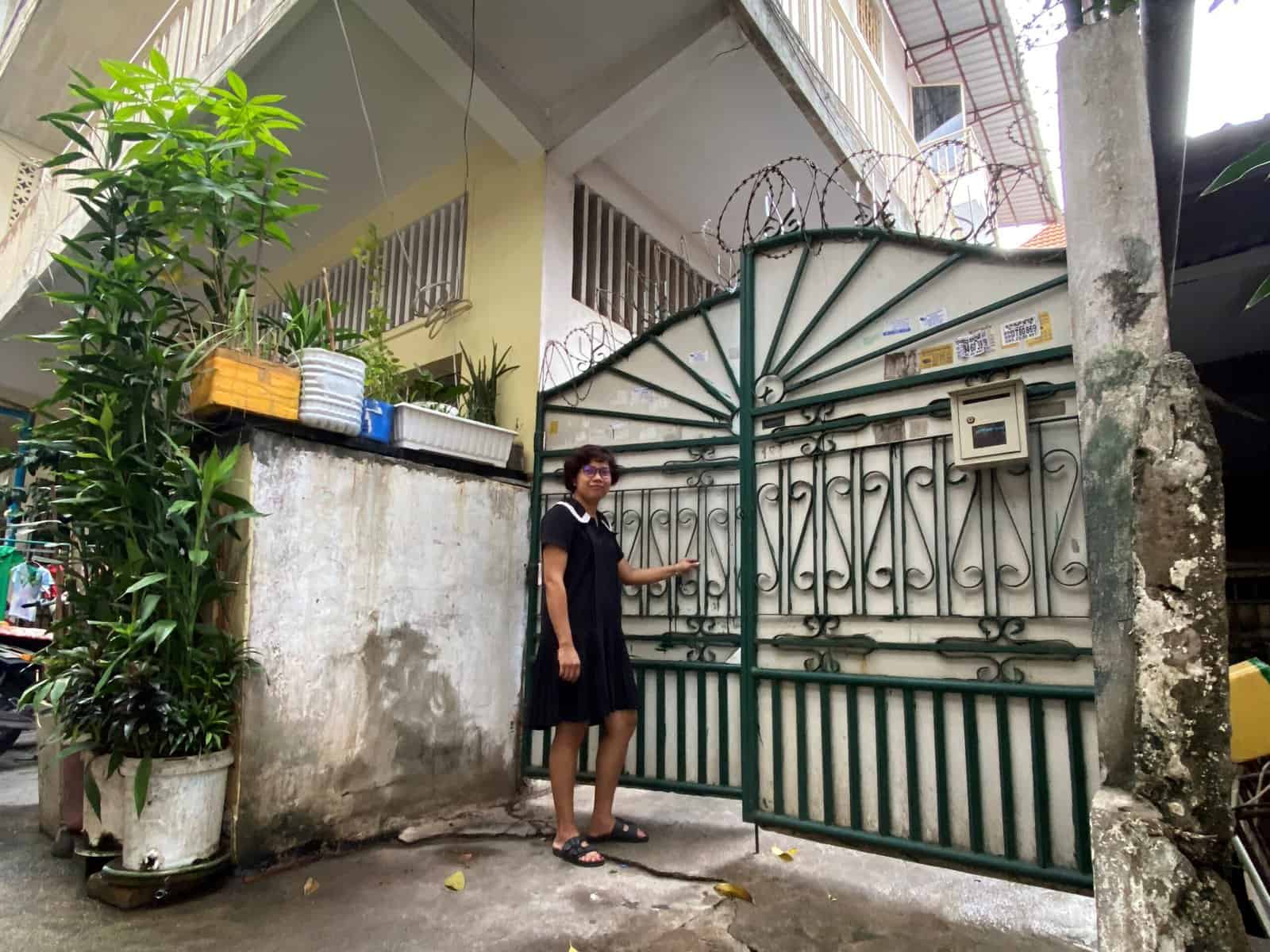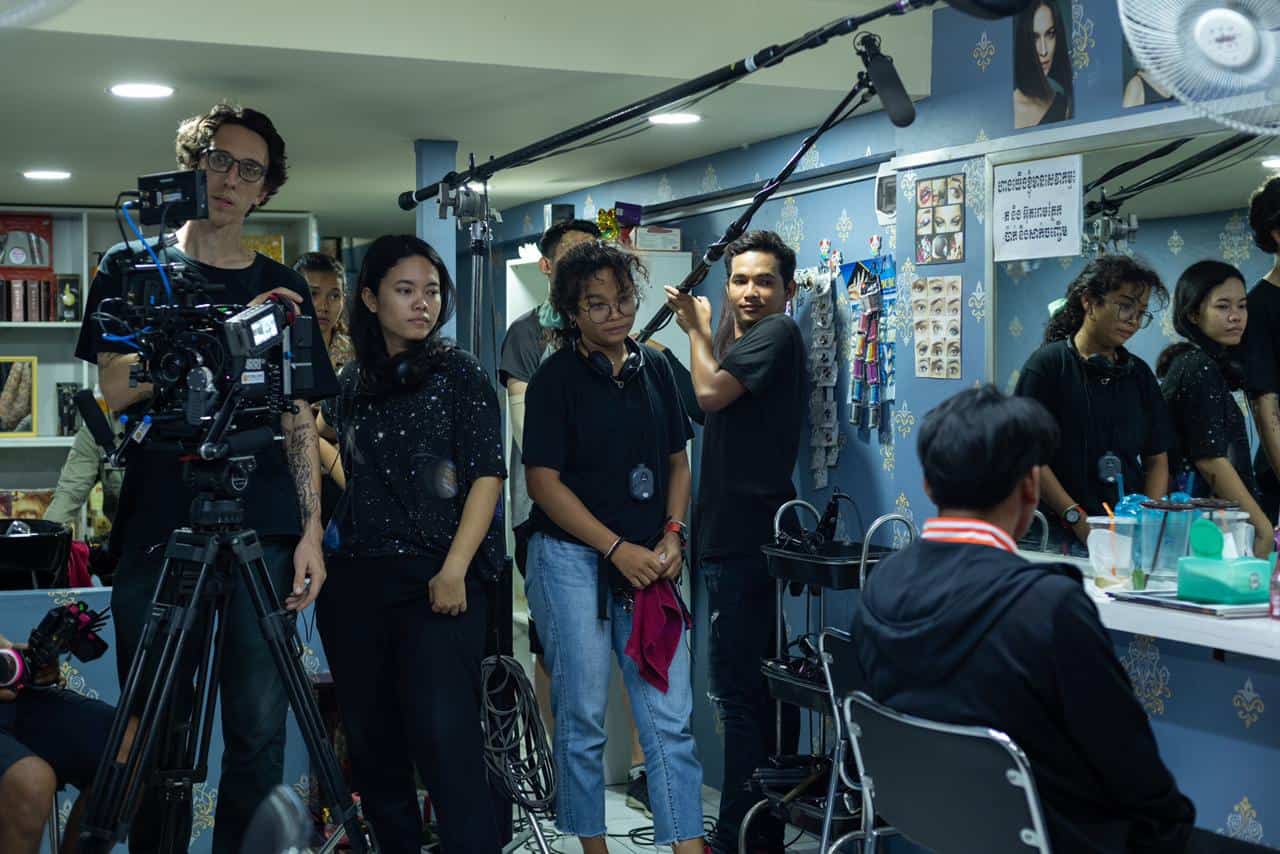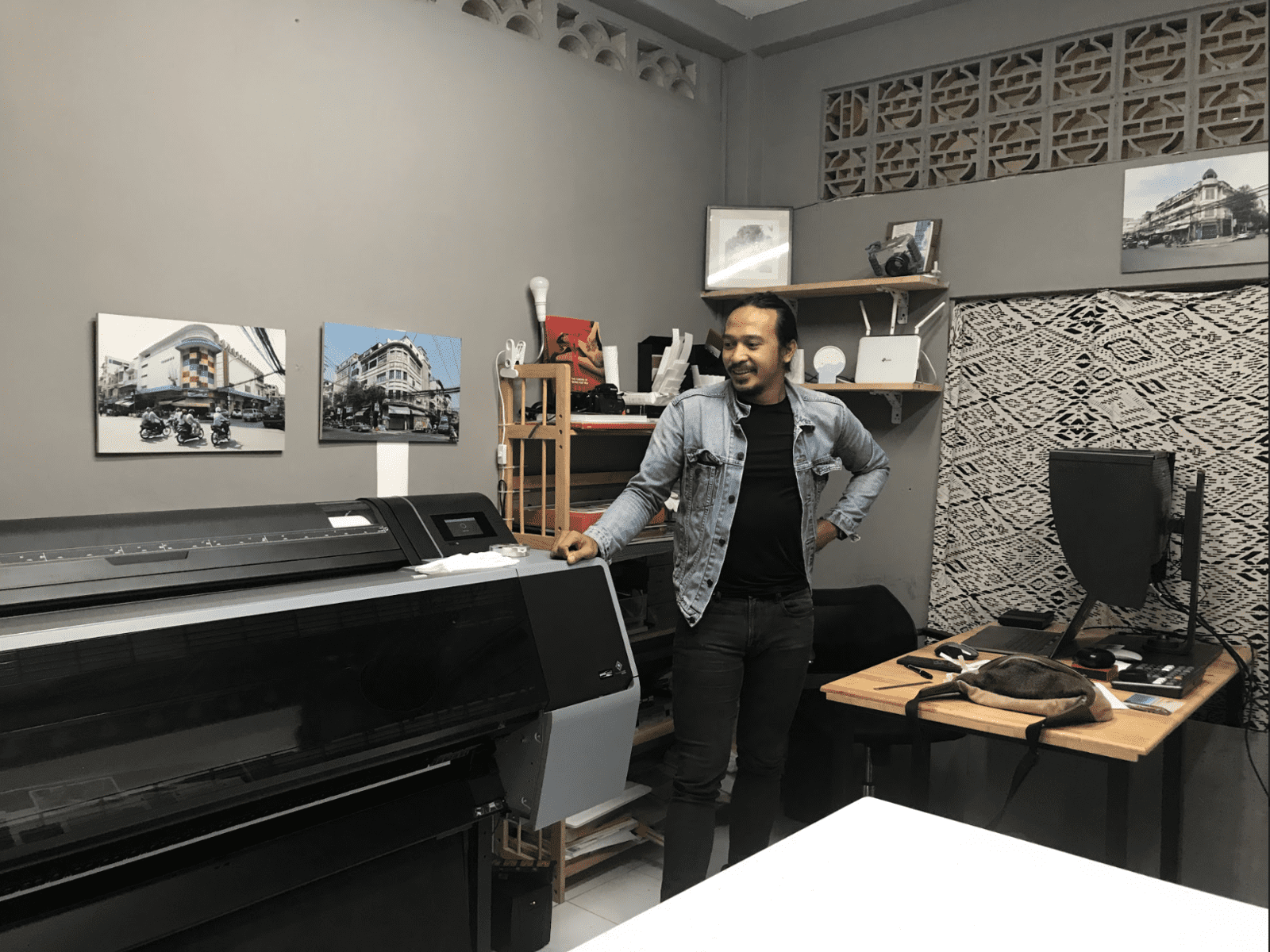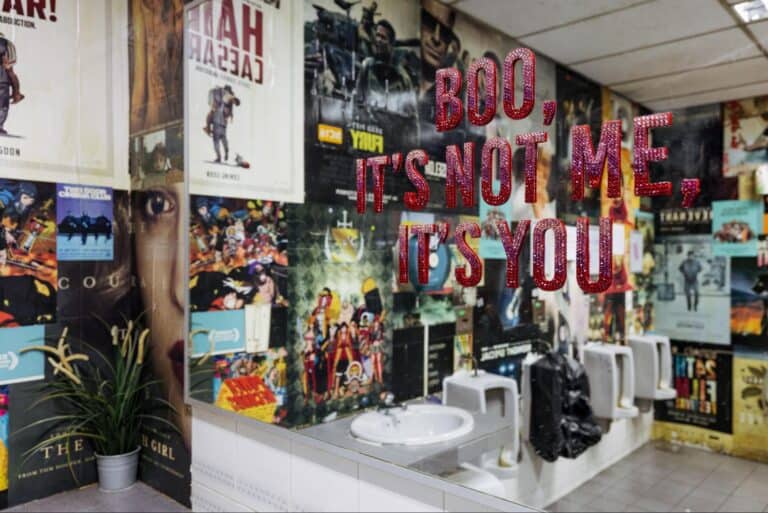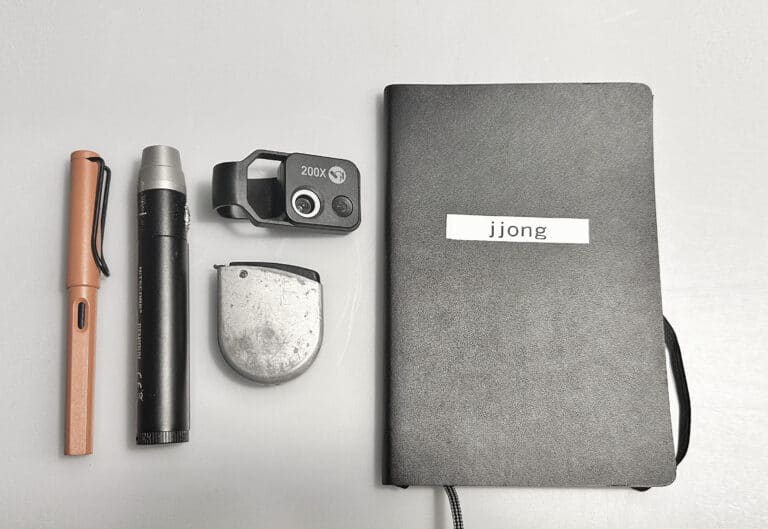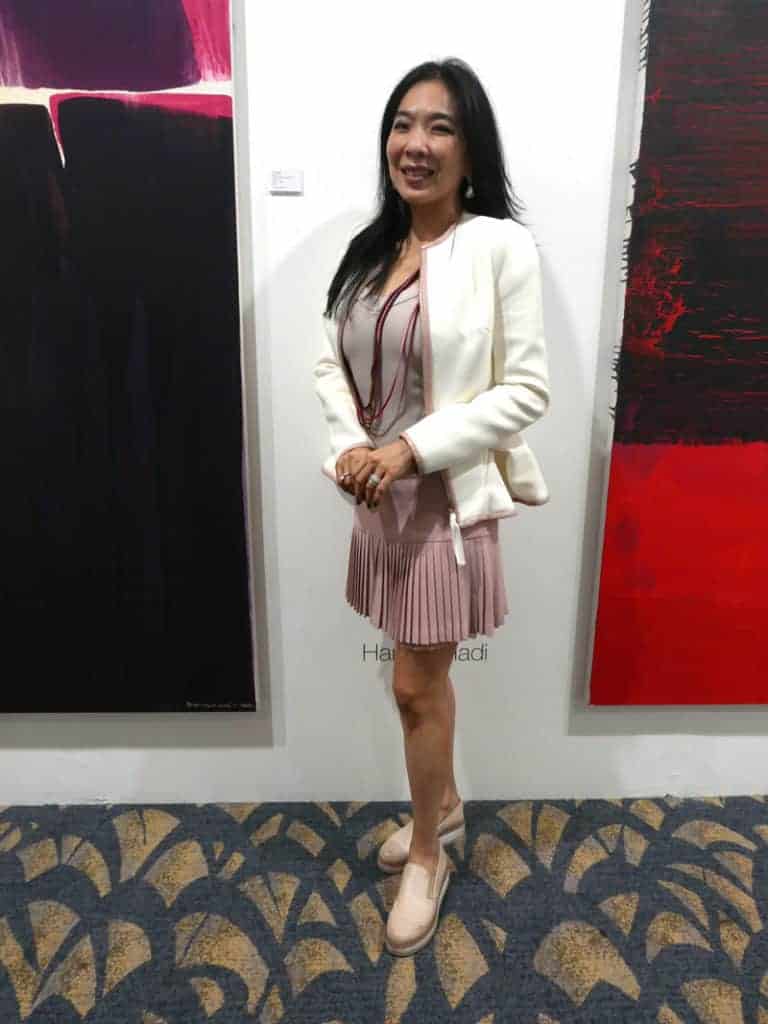Moeng Meta is a seminal curator in Cambodia’s contemporary visual arts community. With nearly a decade of building bridges amongst artists, galleries, collectors, and audiences, she is also the founder of two experimental community spaces, Kon Len Khnhom and arts resource home Dambaul.
A few months ago, I was on the hunt for some publications that weren’t available at any of the bookshops around Phnom Penh. I reached out to Meta, and I was in luck: she had them at Dambaul. Meaning rooftop in Khmer, I fell in love with Dambaul’s simple, white-walled space that had couches, a table, and a kitchenette amongst the shelves of art books. The space had such good energy that I asked for a tour when I discovered Meta had relocated Dambaul to the same building as Anti-Archive, the film production company involved with the internationally renowned White Building.
While Dambaul used to be in a commercial area not so far from the National Museum of Cambodia, it is now tucked down a quaint residential street on the south side of the city, where the sounds of people talking and children playing are never too far away. Meta greeted me warmly at the gate and started the tour at the Anti-Archive offices. There, I met the filmmaker and Anti-Archive member San Danech, and the documentarian Prum Ero, who recently rented a room in the office to open a high-quality photo lab.
Previously, I had the pleasure of seeing a preview screening of Danech’s Sunrise In My Mind and learned of Ero’s art through the Treeline Artist Grant recipient dialogue which Meta curated. It felt convivial to meet them in this space compared to the formal events where I had first encountered their work.
As the tour continued, Meta and I talked about her journey to the art world, the story behind how Dambaul came to be, and why it’s such an important resource for the arts community. We also touched on how being neighbours with Anti-Archive, Ero’s photo lab, and the start-up architecture firm VISOMI Architects, enables a generative environment for creativity, serious thought, and community.
About Meta
By 2009, Meta graduated from business school and was working with a production company based in Singapore. Around that time, without knowing much about the art world, she visited SA SA BASSAC, a contemporary art gallery and resource centre in Phnom Penh, at the invitation of a friend.
While there, she noticed the SA SA BASSAC team having difficulties setting up their PA system and offered to help because of her familiarity with production equipment. Meta tells me that it was a bit surprising for a woman to have this skill set. This made her stand out to one of SA SA BASSAC’s co-founders Erin Gleeson, who encouraged her to keep coming back.
A Phnom Penh native, Meta never knew the contemporary art world existed in her city. She found that it opened her eyes to new ways of seeing and thinking. With this desire to learn more, she kept visiting SA SA BASSAC and in 2013, became the gallery’s Community Project Manager. In this role, Meta helped SA SA BASSAC to advance its exhibition programming through audience engagement with people who were already in the arts as well as university students and children living in the surrounding neighbourhood. It’s in this spirit of wanting to learn more and create opportunities for others to do the same that Meta opened Dambaul.
Dambaul’s Story
Meta had the idea for Dambaul when SA SA BASSAC was closing in 2018. The gallery had a private reading room that was an important resource for art knowledge. With things changing, she could sense that Erin was thinking of returning to her home country, the U.S., and considering what to do with the archive. At that time, Meta was transitioning from her previous roles in the arts to becoming a curator. To be a curator, she knew she needed a space to read and write, telling me that:
“If the books left, it would not be easy for me to continue learning. So, I needed to build a reading room for myself. And I wanted to share it with people like me who needed it. That’s why I approached Erin about keeping the books in the former space of SA SA BASSAC, which became Dambual’s first location.”
Erin liked the idea and agreed to let Meta keep the books in Cambodia.
Rather than use common titles like a reading room or library, Meta has opted to call Dambaul an “arts resource home” because she wants it to be a space where visitors can feel comfortable:
“[I call it a home because] home is a place where you want to belong. It’s a space where you can be yourself. For me to be able to create my life, my work, I’m always looking for [that feeling of] home. Also home implies less pressure. When you go to the library, you must behave. [I want people] to be able to enjoy the reading room as an arts resource home. You can come to Dambaul and relax, go out to see the view, and discuss topics with friends.”
Shortly after launching Dambaul, Meta recognised there are always new books, publications, and exhibition catalogues to add to the archive:
“I asked myself where could I get more books? How can I get them even though I’m not an institution? I was lucky to connect with the National Gallery Singapore and they donated more books to Dambaul.”
Though Meta partners with institutions to move her work and projects forward, it’s essential to keep Dambaul as an independent space. From her time in the business sector, she saw how corruption could creep into a project as well as the compromises that come along with working with external funders. For that reason and for Dambaul to stay flexible and community-oriented, she wants to keep it small and independent for the time being.
Expanding One’s Horizons
While there are other libraries in Cambodia that include books on primarily traditional arts, Dambaul is unique because it focuses on contemporary art. “Because Erin was active in Cambodia earlier in the 2000s, there are texts here that are hard to find,” Meta tells me. She realised this after hosting two international researchers as residents during its first year, sharing that:
“The researchers wanted to work with Dambaul because we had sources they couldn’t find elsewhere. This helped me realise how important Dambaul is because it fills gaps in knowledge that other institutions aren’t.”
A place to expand one’s horizons through independent reading, Dambaul also collaborates with other local organisations to run workshops for the arts community. It previously partnered with Sa Sa Art Projects and Prumsodun Ok to host English For Artists, a three-month intensive program that builds the language capacity of students and young professionals working in the arts and culture sector.
According to Meta, “It was a great collaboration because while the artists are improving their language skills, they could come here and engage with the books.”
Imagining the future of what the arts resource home can do and become, Meta tells me, “It’s in my mind every day, imaging how Dambaul can grow. Eventually, I want to give it to other people when it’s ready. Dambaul is starting to become more public. With the new space, it has a new model.”
Cross-disciplinary Pollination with Anti-Archive and Other Offices
Moving to the same location as Anti-Archive is a step toward Dambaul becoming a fully community-run space. Now, surrounded by people active in the arts and creative sector, Dambaul has joined a key node in the Cambodian arts ecosystem. It can now rely less on Meta to make its texts available to researchers. Likewise, Meta has plans to connect more people with the space in conjunction with Anti-Archive programming:
“Anti-Archive often hosts weekly film screenings. I can open the library before the screening, which gives people an opportunity to engage with the books. They can read and enjoy the moment. I’m so happy with this new model because it’s becoming a community-run space rather than a private reading room that’s available by appointment.”
She elaborates that her dreams have always involved building and sharing with different creative people to expand her own and her community’s vision:
“The more you meet with different people, the more you can learn and imagine how to respond to your context. Having film, contemporary art, a photo lab, and an architecture firm in one place with Dambaul creates connections that enable varied creative responses. It also allows space for people to pursue their projects.”
Reflecting on Meta’s experience, I found myself wondering if it is the shared passion for creative practices that brings people together or if it’s the people who bring others into such practices. In Meta’s case with Dambaul, it’s both:
“At Anti-Archive (AA) and the other offices, these people have good energy, good community, and make thoughtful work. I decided to move here because of them. I value what AA does for the film community: not just commercial work, but art films and documentaries. Things that can be fun but are also serious. This helps me sit down to think about what I’m doing and what is going on around me.”
____________________________________
This interview has been edited and condensed for clarity.
Dambaul is located at House 200 A13, Norodom Blvd, group 59, Sangkat Tonle Bassac, Khan Chamkamorn, Phnom Penh, Cambodia. Click here for more details.
